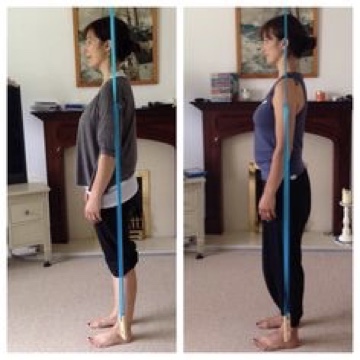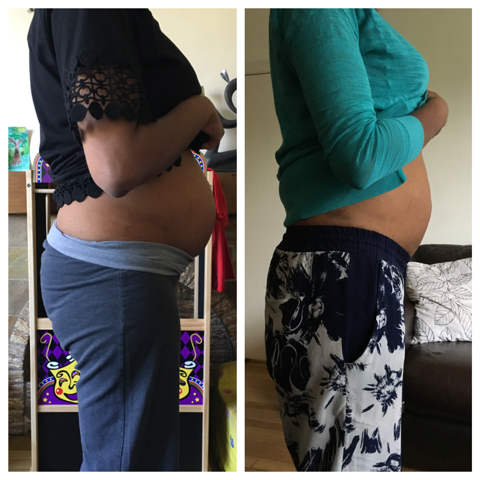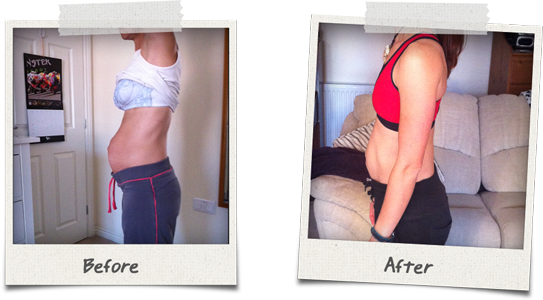Welcome to the world of low-pressure exercise! This is a technique unlike any other you may have tried, and takes a little practice to get the hang of. It is, however, achievable by anyone, regardless of their level of fitness. Even if you’re 95 and barely able to stand up, you can do this! You can even do it lying down. But first, let’s talk about the benefits:
Hypopressive exercise done regularly can
- greatly improve your posture
- reduce back pain
- improve the quality of your breath and your athletic performance
- help prevent and/or treat urine and fecal incontinence and urgency in both men and women
- reduce uterine prolapse in women
- restore prostate health (prostate enlargement, benign hypertrophy, or prostatis) in men
- heal diastasis recti (abdominal wall separation) caused by pregnancy or excess weight
- strengthen your core, tone the abdomen and reduce waist size
- improve and regulate your digestion and bowel function
- enhance sexual function
All this in just minutes a day. And you can do it in your pyjamas, without breaking a sweat. Intrigued? Read on.
Hypopressives comprise postures combined with a type of breath retention called apnea. This type of breath manipulation is an old yogic technique called “uddiyana bandha”. You can find many videos online featuring fascinating examples of what can be done with the abdomen (just google “abdominal churning”.) But you don’t need to do all of this — the basic technique of creating the apnea is all we require to start making positive (and fast) changes to our body.

The fantastic transformation of my trainer, Nikki Scott, who is a Master Trainer of this method here in the UK.

Here you can clearly see the improvement in posture. Notice how much this woman leans forward in comparison to the second photo — there, she is a lot more centred, with the the plumb line running straight through her ear, cente of her hip and also ankle — a perfect, healthy alignment.
Who is it for?
In short, for anyone! Who couldn’t use one or two of the benefits listed above? In women, the pelvic floor is prone to weakening during pregnancy under the weight of the growing baby, combined with the hormone relaxin released in preparation for birth. The pelvic floor then gets a real beating during labour which sometimes causes long-term damage leading to incontinence and/or uterine prolapse. There is less support for the uterus and bladder, both of which move downward. Hormonal changes also play a role, and our pelvic floor loses some of its elasticity and responsiveness as we age. We become, shall we say, a bit leaky. So common, but not normal! And not something to accept for the rest of our lives!
Men can also suffer from weakened pelvic floor, even (and especially) if they are athletes and do lots of heavy lifting and high-impact exercise. So you can be overall very fit, but your pelvic floor can be your Achilles heel. Pelvic floor strength can also be damaged by long-term, persistent coughing, carrying a lot of extra weight, surgery (such as prostate surgery) and ageing. You can read a testimonial of my trainer Richard Peterson and how hypopressives changed his life here.
So how does it work?
Imagine the pelvic floor like a hammock of muscles and fascia (connective tissue) that’s holding up everything that sits above it — our bladder, uterus, intestines and other organs and tissues. Most traditional exercise, as well as our daily activities, create a downward pressure on the pelvic floor (think of sit-ups, running, weight-lifting, coughing etc.).
By creating negative pressure, hypopressive exercise helps reverse these changes and restore the pelvic floor to its original function. Instead of downward pressure, hypopressives create an upward pull. The diaphragm (your main breathing muscle) expands, and all abdominal and pelvic organs and tissues (the strings that hold them in place), as well as your pelvic floor, get pulled upwards and backwards. You will NEVER be able to create a stomach as flat (actually, fully concave) as you will be during the apnea. It’s the secret move of weight-lifting champions to reduce the appearance of their waist size for photos! Any bulges gone in an instant! Practicing this apnea frequently is a great workout for the entire core, and it’s perfect even for people who are otherwise unable to do more traditional abdominal exercises.

Why wouldn’t I just do Kegels if I want to strengthen my pelvic floor?
Traditional pelvic floor exercises (Kegels) are effective and helpful, and you can certainly practice them on their own or in combination with hypopressives. However, Kegels isolate and tone only the pelvic floor alone. They will not have the holistic effect on your body as hypopressives will. They will not help you with your posture, will not change the shape of your abdomen, will not reduce your waist size, and will be slower to address back pain. The upward pull created by the apnea is very powerful and affects the entire pelvis and abdomen in one simple action. The benefits of hypopressives for the pelvic floor alone are comparable to Kegels, so it makes sense to do exercises that give you more bang for your buck, and make the most of your time! Why kill one bird with one stone if you can kill, say, six?
If you’d like to see scientific evidence for the effectiveness of hypopressives, you can read this study done in Spain in 2020.

Sounds good. How do I get started?
To learn hypopressives is relatively simple, but it is very easy to get them wrong, especially the creation of the apnea. If at all possible, seek out a qualified trainer to guide you. It may take a while to get the hang of it, and it’s important that you get feedback and encouragement from someone with experience. Some people are able to learn the technique very quickly, some need a bit of repetition and practice before their a-ha moment. It is also a good idea to seek out a support group so others on the same journey can encourage you and hold you accountable.
I am a hypopressive trainer certified with UK Hypopressives, and I practice daily. If you live in Southampton (Bitterne, Woolston, Netley, Sholing, Lowford), Hamble, Eastleigh or nearby, I will be happy to guide you in a private session, or you can attend one of my half-day workshops.
For upcoming half-day workshop details, click here. I run them every two months. Places are limited to 15 people, so please book early to avoid disappointment. When you finish your workshop, you will have access to our private Facebook support group for as long as you need to. Also, for the first two months, I will be helping you get started on forming your life-long hypopressive habit, because all the amazing techniques in the world are completely useless if we don’t put them into practice!
To book a private session, email me at barbara@bravebodies.com or call me at 0798 223 6118. Depending on your needs, I will build a programme for you so you can progress at your own pace and according to your own ability. We will also be able to address any other postural or breathing issues at more depth, tailored to you. You will also receive regular follow-ups from me, and will be able to video yourself and measure your progress.





